Our animal and wildlife tracking team at LoneStar Tracking absolutely loves working with animals of all type. And if we get an opportunity to make the life of an animal better, we are all about it. Our team has a long working relationship with many universities across the United States, but being based in Texas, we spend the majority of our time working with Texas A&M. This week, we had the opportunity to visit a several thousand acre ranch in West Texas that is used for studying animal behavior.
Anyone that has ever visited West Texas knows that cell phone service, water, people, and anything else that one would consider normal is basically non-existent. LoneStar Tracking has a long history of working with the Oil and Gas community, which operates in West Texas. This gives our company the experience we need to setup and maintain remote infrastructures for IoT.
Given the fact that the University uses this ranch for research purposes, getting real time animal location information has been a difficult task for them. Conventional cellular GPS trackers don’t work because there is no cell service in the area, so the researchers have been depending on satellite based tracking devices which are great for remote areas, but have many issues. First, the satellite transmitter is expensive. In general, they are about double the cost of a LoRa based transceiver. Next, the satellite transmitter needs to be positioned on the animal so that the signal is transmitted into the sky, and not into the ground or bushes. The satellite transmitters are generally configured to perform 3 transmissions in sequence to improve the odds of the signal being detected by the orbiting satellite constellation. And lastly is the frequency of needing to change batteries. As you can imagine, trying to catch hundreds of animals on a several thousand acre ranch can be quite the task.
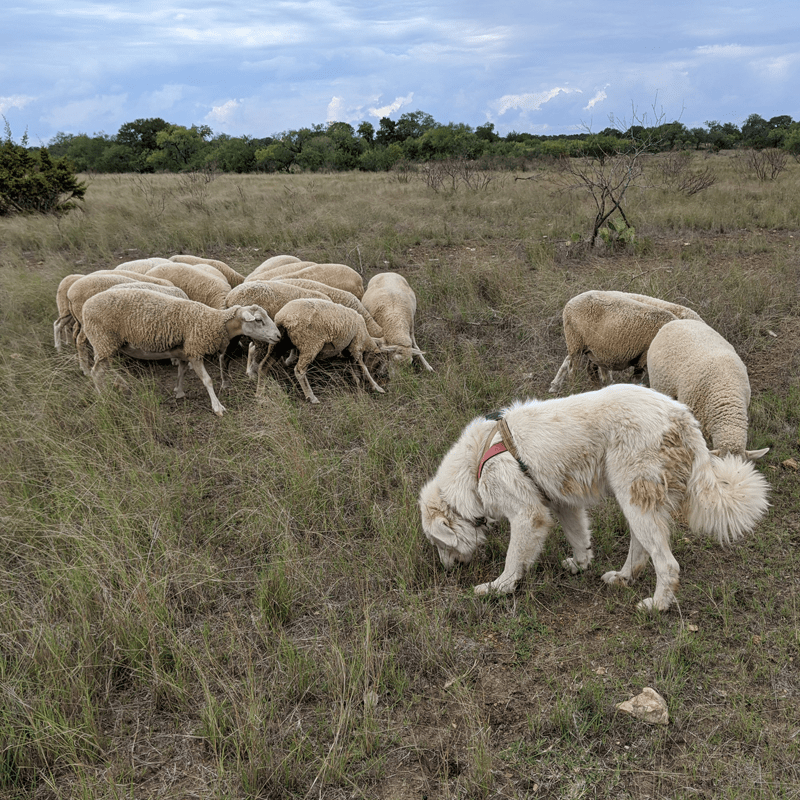
Our solutions for the team of researchers was to utilize a technology called LoRa. This is a very low powered and long range wireless technology that we can use to track the animals in near real time. LoRa technology has been around for quite some time, but only until recent, has it become decentralized. Helium, also known as The Peoples Network, has enabled us to deploy decentralized wireless networks that are backed by blockchain technology. Not only do the researchers get real time location updates from their animals, but this data is secure, encrypted, and decentralized. The tracking device that we selected is the Oyster LoRa 915Mhz tracking device from Digital Matter. This unit has a great track record and outstanding battery life.
To gain Helium/LoRa coverage at this remote ranch, our first step was to figure out the backhaul technology. Whether or not we were going to use a cellular backhaul or satellite backhaul to get the location data onto the Helium/LoRa network. We took a look at the location of the cell towers, and determined that we would need to connect to a tower that was about 16 miles away. This is a significant distance for cellular and requires specific hardware. As well, we also analyzed the available LTE bands which each have specific RF propagation characteristics that further narrowed down our tower selection. The red dot represents the location of our install.
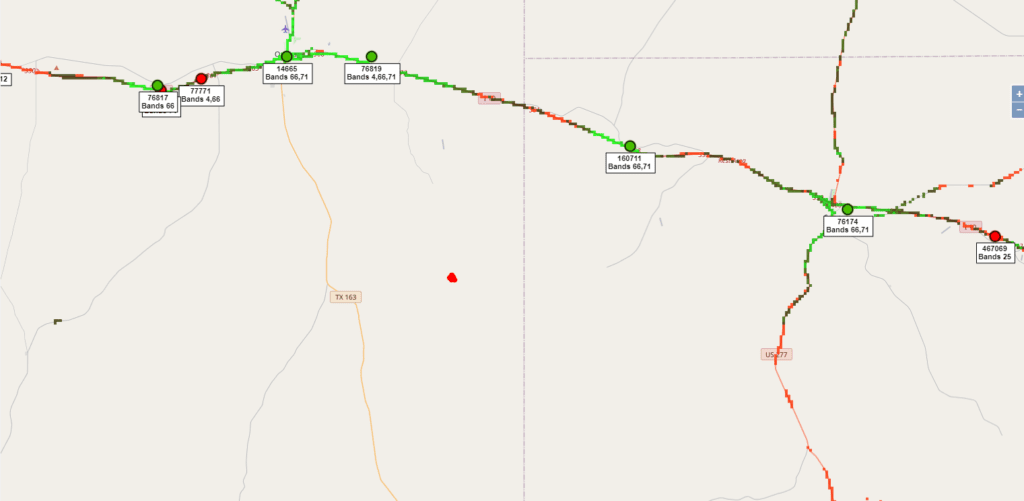
After we realized that cellular backhaul was a possibility, we next ran a RF simulation to visually confirm that our selected hardware would cover the ranch and surrounding areas. To do this, we use a tool called CloudRF. There are several other tools available to estimate your RF coverage, however they lack many of the basic features, such as the ability to specify exactly what type of antenna you are using, what type of cable, how many connectors, etc. This tool was initially designed for Wireless ISPs to utilize when placing towers. You can even place receivers onto the map so you can confirm your gateway is properly placed to communicate with your sensors. After our simulation completed, we determined that we should have sufficient coverage across the ranch. Below you can take a look at our analysis:
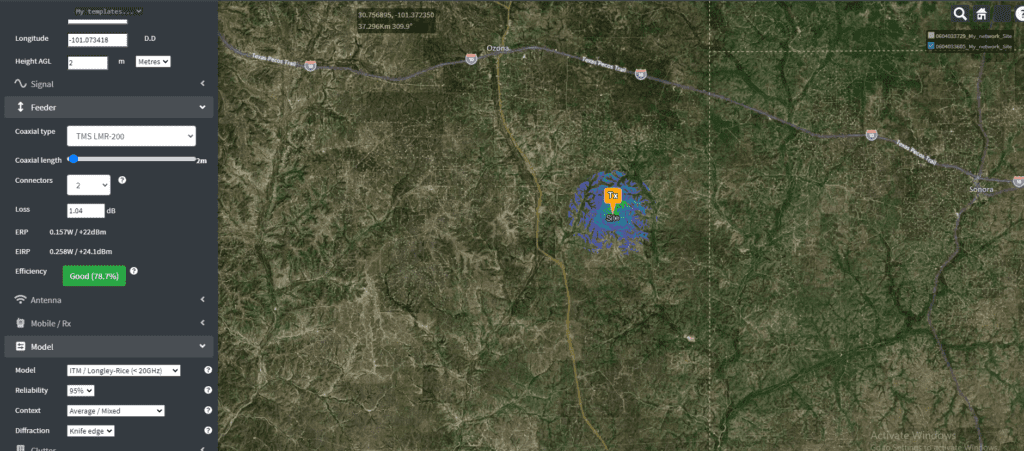
Next up, was to plan our trip to perform the install. Before arriving, it is key to understand how you will install your gear, what direction your antennas will face and how you plan on testing the equipment when you are in an area with no internet and no cell service. Our Helium/LoRa gateways are designed and manufactured by LoneStar Tracking. We specifically designed the equipment for environments like this and have included tools to make installation as easy as possible.
Our first step is to hang all the equipment on the pole or tower. In this case, we didn’t need the added expense of a tower and were able to leverage an existing structure. We pointed the antenna and setup the solar cell, and instantly receiving readings on our mobile app via BLE. Using the data on our phone, we can tweak the antenna for maximum performance and data throughput. Here is a photo of our install:
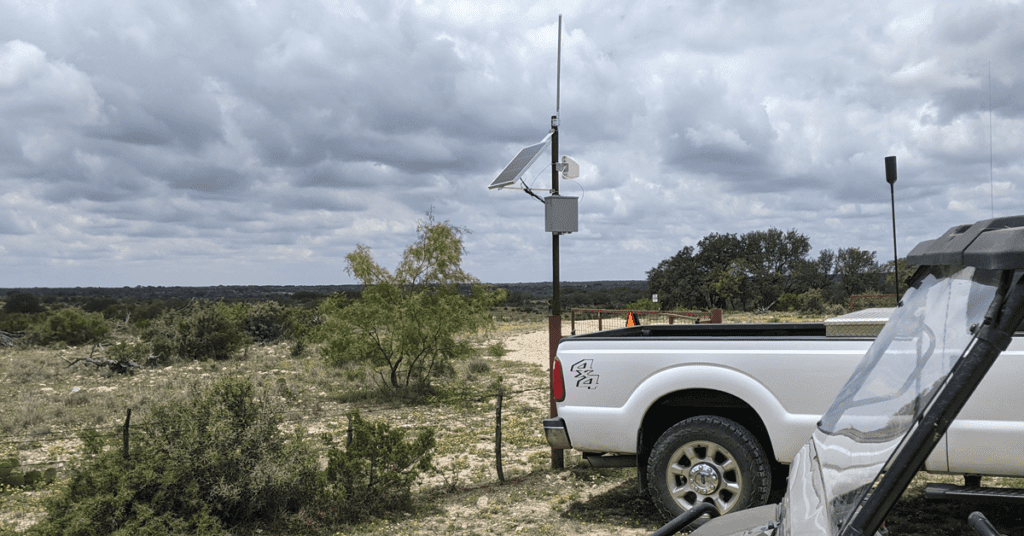
The system we designed is able to handle 15 days without sunlight, has cellular as the primary backhaul and satellite as the backup. Our team at the NOC (network operations center) can monitor the LoRa concentrator, backhaul, charge controller, solar output etc. If we experience an outage, our team will immediately attempt a remote repair or dispatch a truck roll to the site for physical repair.
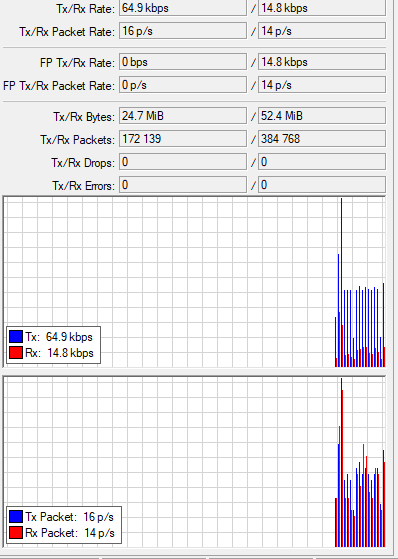

If you are interested in learning more about our remote deployments or custom hardware and custom gateway solutions, feel free to reach out to us. We also offer LoRa consulting services and complete turn-key deployments. Happy DXing!